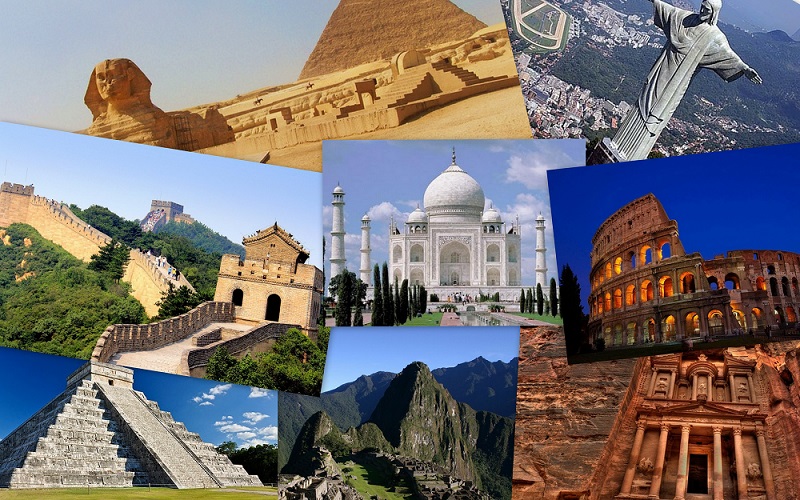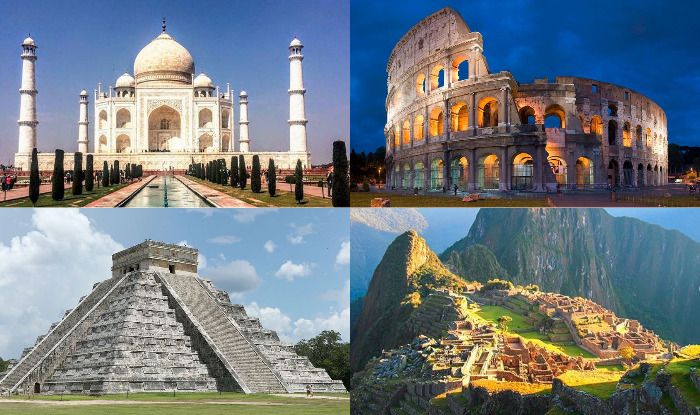

Machu Picchu is an ancient city nestled high in the Peruvian Andes. Whether you appreciate its historical significance or its impressive engineering, there's no doubt that the Great Wall of China is one of the greatest Wonders of the Modern World. Today the Great Wall of China maintains a reputation as a mythical landmark that defies geographical challenges. Once this happened, the Great Wall of China became a popular attraction and helped to encourage tourism within the country. China finally opened its borders to foreign visitors after its defeat in the First and Second Opium Wars during the 19th century. It's estimated that the wall is approximately 13,171 miles long in its entirety.įor much of its history, the Great Wall of China was relatively unknown to the outside world. However, it was also used to facilitate transportation, encourage trade, and regulate China's borders. Most people know that the Great Wall of China was constructed as a defensive mechanism to ward off invading tribes. However, most of the wall as we know it today was built between 13 AD during the Ming dynasty. The Great Wall of China is the oldest landmark on this list as small sections of the wall were constructed as early as the 7th century BC. To visit the Colosseum is to step back in time and gain a glimpse into the sophistication of the mighty Roman Empire. The Colosseum was later used as a housing unit, a cemetery, and a castle, among other things.Īlthough it has been severely damaged over the years due to earthquakes, the Colosseum is still intact some two thousand years after its completion. However, it ceased to function as a space for public entertainment sometime during the 5th and 6th centuries. This space was originally used for public events such as gladiator battles, hunting, and re-enactments ranging from famous sea battles to theatrical performances. It's estimated that the Colosseum could hold approximately 65,000 spectators at any given time, making it the largest amphitheater ever built upon its completion. The Colosseum was constructed between 72 and 80 AD with further modifications taking place between 81 AD and 96 AD. Today nearly 2 million people visit Christ The Redeemer every year, making it one of the most visited landmarks in the world.Īccording to TripAdvisor, in 2018 the Roman Colosseum was the most popular tourist attraction in the entire world with approximately 7.4 million visitors. In 2010, a substantial restoration effort was undertaken to improve the statue's internal structure as well as to repair the outer facade and lightning rods. However, the statue was hit by lightning in both 20, causing some damage to the structure. After 9 years, the statue was finally opened to the world on October 12th, 1931.ĭuring construction, the engineers decided to use reinforced concrete and soapstone as building materials with the hopes that it would make the statue less prone to damage over the years. This event was a success and construction began on the statue in 1922 by a team of Brazilian, French, and Romanian engineers and sculptors.


The group subsequently held a large event that was aimed at garnering support for the project.

In 1920 the Catholic Circle of Rio made a proposal to build a Christian monument atop Mount Corcovado, which towers over Rio de Jainero. This book helped to establish Chichen Itza as one of the greatest archaeological sites in the world, a title which remains to this day.Ĭhrist The Redeemer is easily one of South America's most iconic landmarks. Stephens subsequently wrote a book titled Incidents of Travel in Yucatan, which became immensely popular after its release. The ruins were re-discovered and surveyed by American explorer John Lloyd Stephens in the early 19th century. The city fell into decline sometime in the 13th century but still maintained a sizable population up until the Spanish conquest of the Yucatan Peninsula in the 1500s. Some of these influences suggest that Chichen Itza was in contact with and likely traded resources with other Mesoamerican civilizations. This ancient city was built by the Maya civilization within Mexico's Yucatan Peninsula between the 8th and 10th centuries.įrom an architectural perspective, Chichen Itza contains a diverse range of influences compared to other Mayan ruins in the surrounding region. Chichen Itza is Mexico's most visited archaeological site and it's also of the most famous Wonders of the Modern World.


 0 kommentar(er)
0 kommentar(er)
